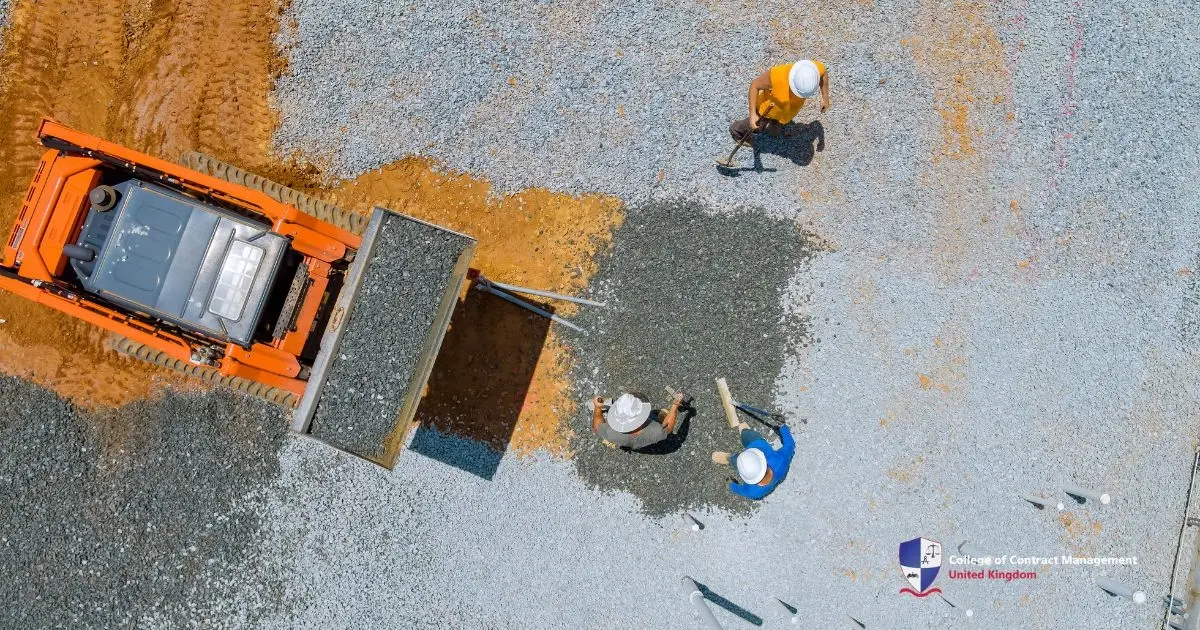Do you ever feel unsure about how much gravel you need for a project? Using a fairly accurate gravel calculator is always necessary. Whether it's for fixing your backyard or managing a large construction job, counting the number of gravel is important. It's to ensure the approximate volume of decorative quantities needed to complete a landscaping job.
When it's time to lay a new driveway or install a stunning garden pathway, it's common to get confused. It can be difficult to gauge, but you have a plan and know how much gravel you need to order. An incorrect order may incur unwanted charges. This is where a gravel calculator comes in. Using one is the best way to efficiently calculate the gravel needed. It guarantees accurate measurement without ambiguity.
What is a gravel calculator?
A gravel calculator is a helpful tool used to calculate the required gravel for a construction project. This will display details regarding the size and depth of the area in addition to the kind of gravel used. Additionally, this calculator is useful for calculating the duration of the project. In short, it’s a straightforward web-based tool that determines how much gravel a person needs. All you need to do is add some details, like the area’s length, width, and depth, to get an answer. It’s quick, it’s free, and it’s very effective. Say goodbye to wasting your time at a hardware store looking for the right tool.
The simplicity of this calculator application is its primary utility. They require basic measurements, so you do not have to be an expert to operate this tool. Also, it often takes into consideration aspects like the type of gravel or the size of a project. That means greater accuracy and less confusion for its users. Who doesn’t want that help when they’re coming up with their next big idea? This is where a gravel calculator comes in to help make the planning process less complicated and ensure you get the right amount of gravel for your project. It’s something for you to read before you go gravel shopping. Whether you are building a patio or patching a muddy driveway, this calculator keeps things smooth.
The importance of a gravel calculator
The gravel calculator is very beneficial and easy to use; that's why it deserves a spot in everyone’s toolkit. It can save you time and reduce the amount of cost. Instead of confusing math formulae or guessing numbers, people can get instant results with this tool. Hence, they can spend less time calculating and more time digging for information about their building project.
Money is another main reason to start using a gravel calculator. Ordering too much gravel burns a hole in the wallet, while too little means extra trips to the store. This tool helps people get the right answer based on the amount the project needs. It helps them purchase within standards, keeps budgets happy, and projects moving. What’s more, it’s environmentally friendly, meaning less waste equals a happier earth.
Its accuracy is on the top as well, not just this. It also eliminates human error that can occur when people add numbers manually. They also prevent mistakes, such as running short mid-job and wrong results, with precision measurements. It is a small step that goes a long way.
The best ways to use a gravel calculator
Anyone can master this handy tool in a few minutes; it’s so much easier to use. First of all, you need to take a measuring tape, and then write down the length and width of the area of the project. Next, you can determine the depth of the gravel layer, typically a few inches. You have to know these numbers to use this tool. After that, pull open a gravel calculator on the web; tons of free ones will pop up from a quick search. Finally, enter the numbers in those measurements, click calculate, and the calculator will give you a total volume.
Certain tools even enable you to choose between types of gravel, like pea gravel or crushed stone, for tailored answers. Also, it will likely change things based on your construction project. For example, a driveway will require a thicker layer than what you would use for a garden path. So, it is covered perfectly with gravel, which is why you change the depth number. Here is how to use this calculator accurately:
- Measure the volume twice: If the dimensions are off, double-check them and try a different approach instead of just trusting the output.
- Know your gravel type: Different varieties weigh different amounts, so selecting the best one for your project is important.
- Re-checking the gravel calculator: Putting a little more in the gravel calculator will help you avoid the wrong result.
Common projects that need a gravel calculator
Driveways are one project that requires a gravel calculation since we need them to be strong and attractive. A gravel calculator helps determine how much material keeps cars rolling. The size and depth are also taken a step further when it makes the base last through rain or shine. Nobody wants to be surprised by a pothole, after all.
Creating your own garden pathways is a lot of projects as well. They are easy to make, low maintenance and great for your surroundings. It can measure the walkway, figure out a thin layer and let this helpful tool work its magic. It tells them exactly how much gravel gives that crackly rustic feel. It’s an asset for any backyard facelift. Use this to create patios and landscaping work.
Whether someone’s building a fire pit base or filling a flower bed border, precision matters. The gravel calculator makes sure that users have enough gravel to get the job done without any leftover piling up. This calculator is handy and budget-friendly and keeps creative ideas flowing. Here are two examples of how much gravel to use for these projects:
- Driveway Tips: It often suggests 4-6 inches deep for heavy use.
- Path Perks: It keeps garden paths at 2-3 inches for a comfy stroll.
Picking the right gravel
Not all gravel types are the same, and a gravel calculator knows it. Thus, you need to pick the right type for your construction project before deciding on numbers. Pea gravel, with its small, smooth stones, is ideal for paths and patios. Crushed stone, rougher and tougher, works for driveways. The result depends on what you choose and what you need.
Size and weight play an important role, too. Smaller gravel packs tighter, while larger fragments need more space. You can see the function of this application that can give results according to the materials. You should check with suppliers since some offer this tool based on their stock. After all, choosing gravel isn’t just about looks; it’s about purpose. By using this application, people can match their pick to the project’s needs.
Mistakes to avoid with a gravel calculator
Even with the help of this tool, a mistake is possible to happen. If someone’s off by a foot, the gravel calculator’s output won’t save them. They’ll either drown in extra gravel or scramble for more. Double-checking those numbers keeps the result on point. Another crucial part that can't be skipped is depth. A gravel calculator needs all the details to function. Forgetting to input how thick the layer should be throws everything off.
Hence, people should think about their project’s demands and input the gravel calculator accordingly. Ignoring the type of gravel can also lead to results that aren't what you want. However, they won’t be able to guess if they want lightweight pebbles or heavy rocks. They need to select it upfront. Otherwise, the tonnage won’t match your gravel choices.
Places to find a reliable gravel calculator
It isn’t hard to find this nifty tool, given that there are options everywhere on the internet. They are frequently stocked at hardware store websites like Home Depot or Lowe’s. They’re accessible and linked to actual products people can easily purchase. Dozens more are at the ready to help you when you click on “gravel calculator” on Google. Suppliers get in on the action, too. Many tools available on the sites of local gravel yards or landscaping companies count your gravel.
Those typically match the gravel they sell, so ordering is simple. People simply enter their specs, and this calculator matches what’s available. Plus, some apps are available for download on your phone, so you can measure right then and there. They’re useful for those who enjoy arranging or planning something on their devices. A good gravel calculator is ready to ease the project on whatever side they turn.
Final Thoughts
The gravel calculator can make your project planning easy. It offers you the power to measure, budget, and build something with confidence. A gravel coverage calculator is a versatile application that can help you save time and effort in the long term. Further, it will let you know about a sample material to check the quality and consistency of the raw material. It’s a game-changer for anyone swinging a shovel.
If you are someone who wants to master how to construct and expand your career in this field, then you should consider joining the College of Contract Management. They specifically specialise in providing high-quality and flexible online training courses in fields such as construction and project management. If you're ready to start a better future and embark on this new learning journey, now is the time to enrol with the CCM. Take the first step towards shaping your future with high-quality and up-to-date learning resources.





